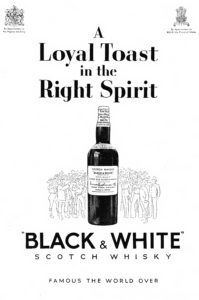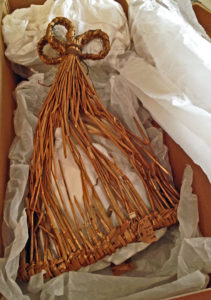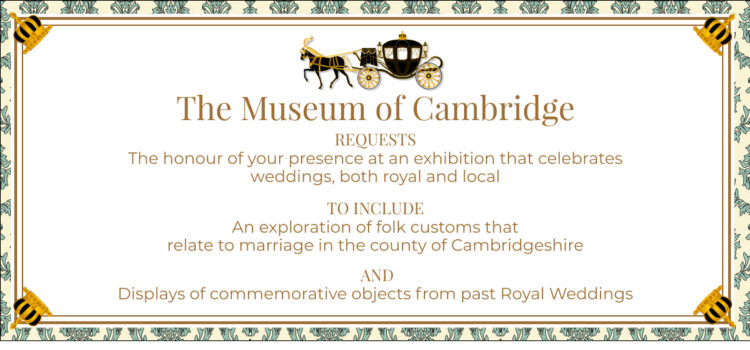Something old, something new, something borrowed and something blue
We have all heard the old rhyme that explains what a bride should wear to her wedding in order to guarantee future happiness, prosperity and good luck. There are, however, many other things that a newly married couple should bear in mind. Tracing Traditions Project Assistant Sarah Dore explores some unusual customs…

Fortunately for the Duke and Duchess of Sussex, May weddings are no longer considered unlucky. Indeed many plan for them because of the longer days and mild weather. This was not always the case, however. Right up until the 19th Century, May was considered to be the least favourable month. March and September nuptials were much preferred and brought the most good fortune according to people of Brandon Creek (as noted by W. :H. Barret).
In a similar vein, the day of the week holds little sway nowadays but there were those who believed it highly significant. Enid Porter’s Cambridgeshire Customs and Folklore tells of a woman who believed that marrying on a Friday was the sole reason for her divorce some years later.
The Right Name
For many years, the rhyme Change the name and not the letter, Change for the worse and not the better predicted dire consequences should a woman marry a man whose surname began with the same letter as her own. By the late 1960s, however, it had lost its piquancy and become less a warning and more a jovial jibe.

Good fortune as a result of a glimpse of a chimney sweep on the journey to or from the church was such a deeply-held belief that sightings were often prearranged. A congratulatory kiss from the local sweep as a bride exited the church was particularly effective and so popular that the service was rarely free. Sweeps were often paid to be present or received a generous amount of beer in thanks.
The Unplanned Guest
While the arrival of uninvited party guests would be troubling to many, in Ireland the presence a particular masked and costumed group is thought to bring good luck, wealth, health and happiness to newlyweds. Its a custom still practiced today.
Groups of local men will dress up as straw boys, wearing masks similar to the one pictured, arrive at a wedding party unannounced and dance with the newly married couple and their guests. They are anonymous revellers and their conical straw headwear ensures that their identities remain secret. After a dance, they disappear as swiftly as they appear.
If All Goes Wrong
In Cambridgeshire, anyone who was unfaithful in their marriage would be subject to the practice of tinging (also known as tin kettling or tinning). Their neighbours would show disapproval by making rough music outside the person’s house using saucepans, spoons and any other domestic objects that were readily to hand. Not only would this bring shame to the recipient but often would drive them from the village forever.
Bibliography
Porter, E., (1969). Cambridgeshire Customs and Folklore. Abingdon-on-Thames: Routledge & Kegan Paul PLC.
Ask About Ireland., (unknown). Wedding Day Traditions. Online. Available at: http://www.askaboutireland.ie/reading-room/history-heritage/folklore-of-ireland/folklore-in-ireland/the-life-cycle/marriage/wedding-day-traditions/
[accessed: 17.05.2018]
Irish Heritage Urns., (2015). Ever Heard of A Strawboy??. Online. Available at: http://www.irishheritageurns.com/ever-heard-of-a-strawboy/
[accessed:17.05.2018]
